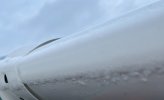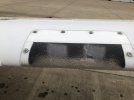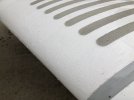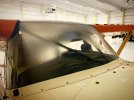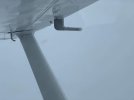- Joined
- May 24, 2016
- Messages
- 961
- Display Name
Display name:
4RNB
Most of my flying has been in VFR conditions, some actual IFR as a student, but all in warmer temperatures. I'd like to go visit family, landing at an airport SW NY (KJHW). Home is eastern NC. Yesterday I did some planning for a potential flight, route of flight if IFR would require 6000 feet, 8000 gives me better height over some mountains. Pireps yesterday reported some light icing. I'd like to not experience icing, and want to bounce off ideas, receive input and thus better clarity on how to stay safe. IFR equipped C172
My thoughts:
1. No night takeoff or landings due to inability to sufficiently avoid clouds and thus moisture.
2. Avoiding visible moisture (clouds) at cooler cruise altitudes will minimize icing.
3. If I can adequately determine cloud layers, I'm thinking to be willing to penetrate through broken layers for VFR on top (and beneath) conditions, especially at lower levels.
4. For a four hour trip, the middle two hours require more altitude.
5. Basically, I want to have mostly VFR conditions.
6. Icing is unlikely to form "out of thin air", if VFR. Clear air = minimal moisture concerns, even if sub freezing temperatures exist.
7. Middle of the day flying better as temperature dew point spread will be more favorable.
Feedback? Thoughts? Thanks.
My thoughts:
1. No night takeoff or landings due to inability to sufficiently avoid clouds and thus moisture.
2. Avoiding visible moisture (clouds) at cooler cruise altitudes will minimize icing.
3. If I can adequately determine cloud layers, I'm thinking to be willing to penetrate through broken layers for VFR on top (and beneath) conditions, especially at lower levels.
4. For a four hour trip, the middle two hours require more altitude.
5. Basically, I want to have mostly VFR conditions.
6. Icing is unlikely to form "out of thin air", if VFR. Clear air = minimal moisture concerns, even if sub freezing temperatures exist.
7. Middle of the day flying better as temperature dew point spread will be more favorable.
Feedback? Thoughts? Thanks.


